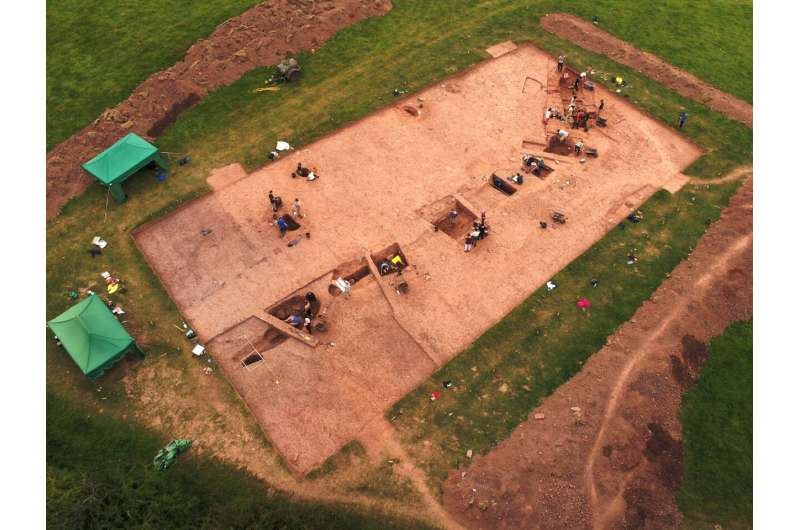This article has been reviewed according to Science X's editorial process and policies. Editors have highlighted the following attributes while ensuring the content's credibility:
fact-checked
peer-reviewed publication
proofread
Neolithic beginnings in Herefordshire, England revealed

Archaeologists have used advanced radiocarbon dating to investigate the age of Neolithic monuments at Dorstone Hill in Herefordshire, revealing that they are appreciably older than expected.
The dating indicates that Neolithic people, who practiced farming and monument building instead of hunting and gathering, were present in the region at least 5,800 years ago. This would make Dorstone Hill the earliest culturally Neolithic site in the west Midlands of England, comparable with early dates from Penywyrlod and Gwernvale in the Black Mountains of Wales.
These early dates, so far inland, suggest that Neolithic practices did not spread evenly from south-east to north-west across Britain, as has sometimes been suggested, but instead moved somewhat irregularly, with pockets of hunter-gatherers and farmers sometimes co-existing for hundreds of years.
Dorstone Hill was excavated between 2011 and 2019, but this is the first time that advanced statistical methods have been applied to the resulting radiocarbon dates. This analysis demonstrates that activity at the site began rather earlier than elsewhere in the region.
Seeking to place the various structures and deposits at Dorstone Hill into a temporal context, Professors Keith Ray and Julian Thomas, with a team of investigators from Cardiff University, the University of Manchester and Manchester Metropolitan University, carried out a program of radiocarbon dating and chronological modeling for the site. Their results are published in the journal Antiquity.
Bayesian chronological modeling is a mathematical method that allows archaeologists to integrate all the available dating evidence, including radiocarbon dates and stratigraphy, to produce more robust chronological frameworks.
In this case, the team collected 12 new radiocarbon measurements from bone, antler and short-life carbonized plant material found at the site, then modeled these against stratigraphy and archaeological phases identified during the excavations. This revealed that almost all phases of occupation were earlier than expected, with the earliest occupation probably going back further than 3800 BC.
"Dorstone Hill appears to have been a location in which a series of phenomena seem to have occurred at an unusually early date," said Professor Thomas. "This marks it out as an important regional center, a place of origins and beginnings, which acquired and retained a particular significance through the earlier fourth millennium BC."
Importantly, this means that the monuments at the site are among the earliest in Britain, despite being located in a landlocked part of the island, remote from the south-east where Neolithic migrants from the continent were believed to have first arrived.
This could have dramatic implications for our understanding of Britain's first farmers. It is possible that they did not sweep across the island at a uniform rate, and the process was uneven and messy, marked by areas of precocious change, time-lags, and diverse relationships with indigenous hunter-gatherers.
"The fieldwork at Dorstone Hill demonstrates the value of extended archaeological investigation outside of the 'core' areas of Neolithic archaeology," said the authors. "All of this serves to underline the importance of Dorstone Hill as a location where regional social identities were made and remade throughout the earlier fourth millennium BC."
More information: Keith Ray et al, Dorstone Hill: a Neolithic timescape, Antiquity (2023). DOI: 10.15184/aqy.2023.93
Journal information: Antiquity
Provided by Antiquity



















